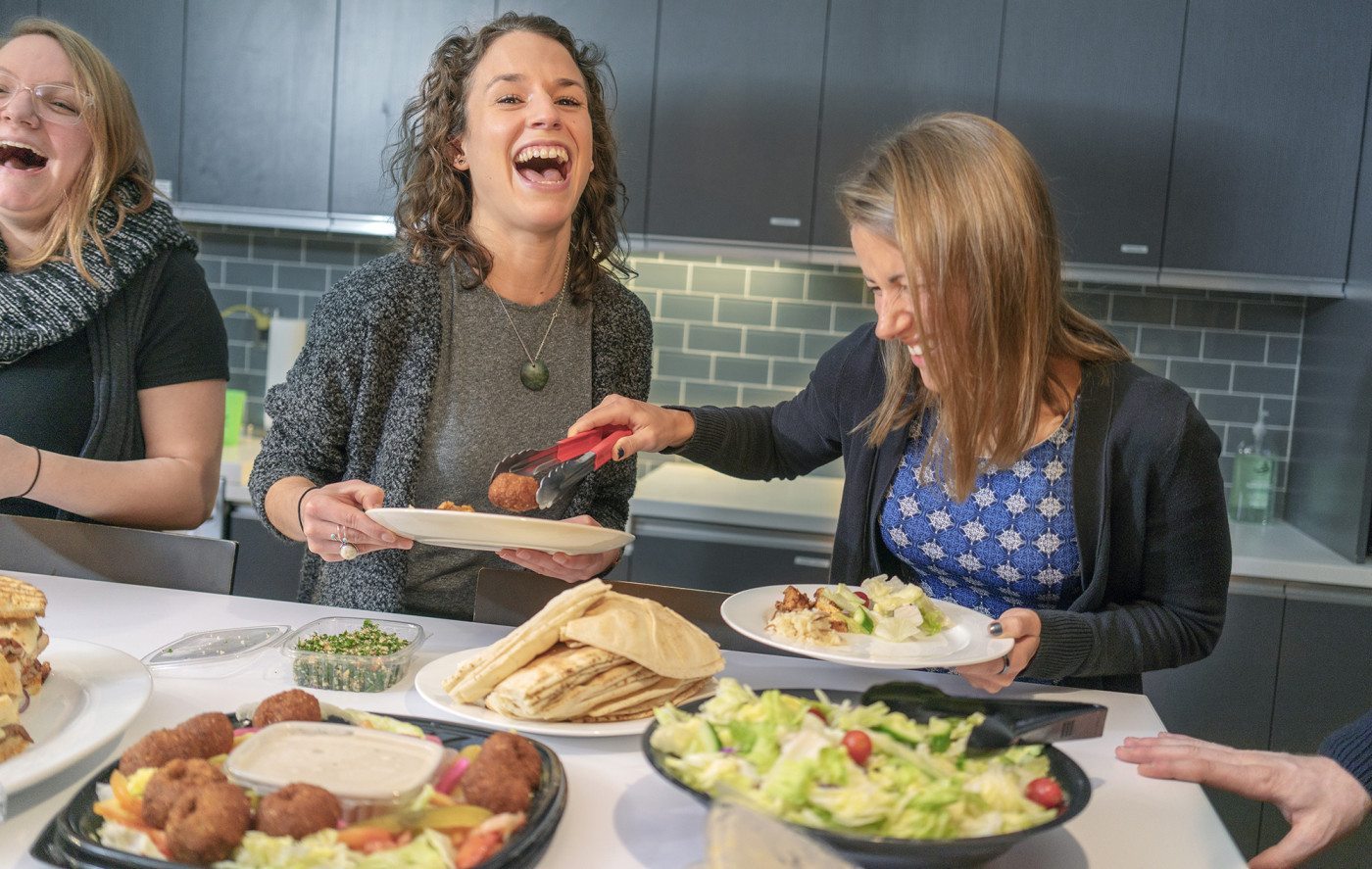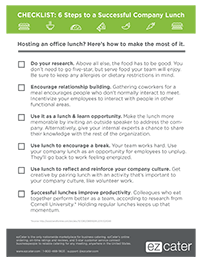Getting your team together for a company lunch is a fickle thing. Depending on your culture and your employees, it can either be an hour of stiff conversation and awkward silences, or a boisterous afternoon filled with laughter.
Most likely, your team falls somewhere in between.
But don’t let that deter you from turning lunch meetings at your company into something great. Something more than a bunch of people eating leftovers and browsing Facebook on their phones.
Here are some tips for hosting a company lunch that the whole team will rave about.
Here are some tips for hosting a company lunch that the whole team will rave about.
Download our checklist:
Benefits of company lunches
It can be hard to see why this matters. Lunch is seen as “free time,” and you want to give employees freedom. Well, you can do that and still have business lunches. And here’s why you should try:
Build relationships
A social setting like lunch lets employees mingle with any coworker, allowing people who may not work together regularly get to know each other.
At Warby Parker, the team holds “Lunch Roulettes,” where they break into groups for lunch and make sure only one person from a department is in each group. This lets people socialize outside of the group of coworkers who sit next to them all day, every day.
Improve productivity
Having departments eat together can be just as beneficial as having colleagues mix and mingle. Research has shown that coworkers who eat lunch together work more productively as a team.
And it makes a ton of sense. Casual lunches let teams bond and build rapport in a way working together doesn’t. This can help teammates understand each other better—and then operate more efficiently as a team.
Encourage breaks
Too many workers end up working through lunch, having a snack here and there at their desk. And I know what you’re saying: “But they’re more than free to take a break! I’m totally fine with that!”
While that may be true, your employees are hard workers. So they may end up eating at the cubicle anyway.
Unless they have a better option. Having an official lunch activity encourages people to get up, give their eyes a break from the computer screen’s glare, and socialize a bit.

Tips for starting a lunch program
One hesitation to having company lunches is that lunch is the one free period employees have, and bosses feel weird taking away that choice. The answer to that? Start a lunch program so great your employees want to go to it.
Here’s how.
Get the good stuff
First things first. The food has to be good. You could be giving away free iPads at lunch, but if you’re serving soggy PB&J sandwiches, unappetizing bread becomes part of that memory, too.
You don’t need to go five-star, but serve food your team will enjoy. That also means taking into account any food allergies or dietary restrictions—medical or otherwise. Some companies even bring in chefs!
Hold lunch and learns
“Lunch and learns” are like the cool college classes you see in movies, where the hip professor changes the way the students look at life. Only a lot less dramatic, and a whole lot more common.
Lunch and learns give employees a chance to learn about a new topic, either from a colleague or someone that comes in for the occasion.
It’s all about expanding your horizons and hearing different viewpoints. And it doesn’t need to be strictly business. At Bit.ly, the lunch and learns have ranged from work-related topics like “How to Build an App” to “What Makes Puns Punny” (and who could pass up that last one?).
“You don’t need to go five-star, but serve food your team will enjoy. That also means taking into account any food allergies or dietary restrictions.”
Be creative
Lunch doesn’t always mean sitting down and eating lunch. Thing about other food-related activities, like cooking together or holding a potluck.
It should reflect your larger company culture. For example, if your company values nature and a lot of you are outdoorsy, head outside for a picnic or start a community vegetable garden. (It can always be a small, indoor one by the kitchen window.)
Just make sure people do have the chance to eat, whether during the activity or before heading back to work afterwards.
Make it more than lunch
The most important thing to take away from this article is that a good lunch is more than just lunch. For a lunch program to succeed, it can’t just feed. It also needs to entertain, build bridges, and fulfill needs. Great taste is just a delicious bonus.








